Grow Grape Tomatoes at Home and unlock a world of fresh, flavorful goodness right outside your door! Imagine popping sweet, juicy grape tomatoes straight from the vine into your salads, snacks, or even a quick pasta sauce. Sounds idyllic, right? Well, it’s more achievable than you might think, even if you don’t have acres of land. For centuries, home gardening has been a source of sustenance and joy, connecting us to the earth and providing fresh produce for our tables. From ancient Roman courtyards to victory gardens during wartime, growing your own food has always been a rewarding endeavor.
But let’s be honest, sometimes the idea of gardening feels overwhelming. That’s where our DIY tricks and hacks come in! We’re here to demystify the process and show you how easy and fun it can be to grow grape tomatoes at home, regardless of your experience level. Whether you’re a seasoned gardener or a complete newbie, these tips will help you cultivate a thriving tomato patch, even in a small space like a balcony or patio.
Why do you need these DIY tricks? Because store-bought tomatoes simply can’t compare to the taste of homegrown ones. Plus, you’ll know exactly what’s going into your food, avoiding harmful pesticides and chemicals. Get ready to roll up your sleeves, get your hands dirty, and enjoy the satisfaction of harvesting your very own delicious grape tomatoes!
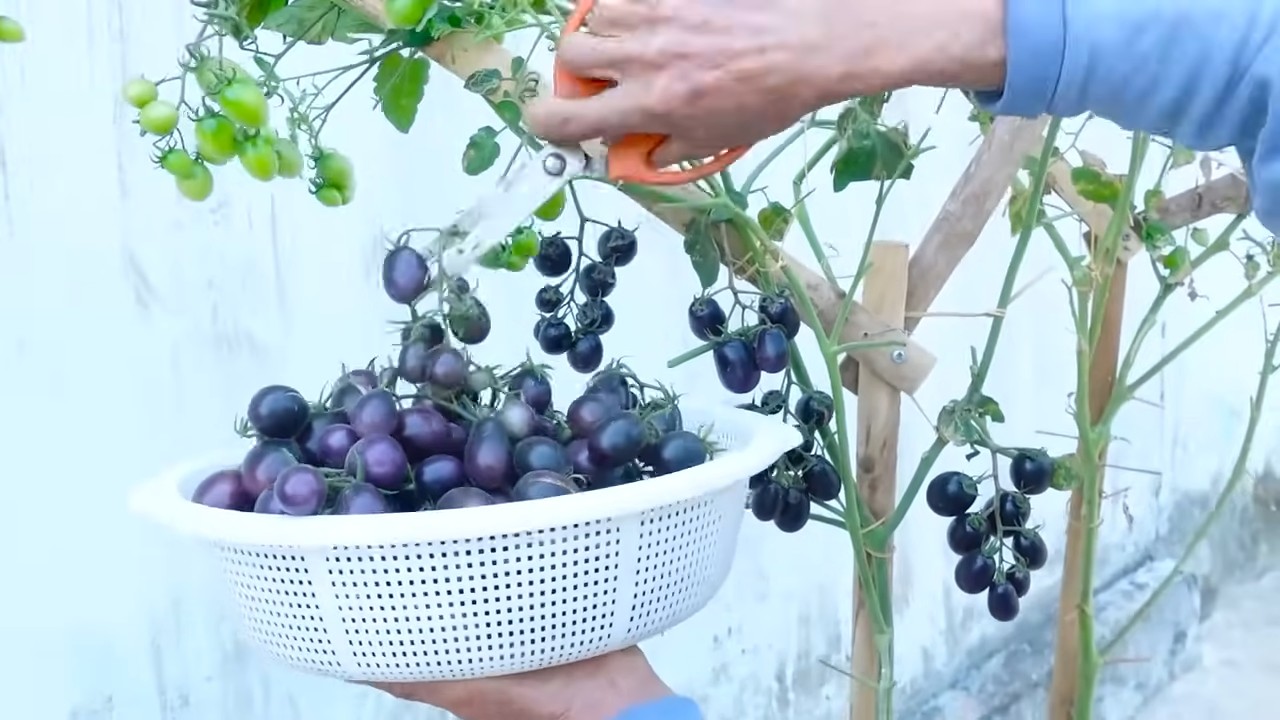
Tomato Bliss: How to Grow Your Own Juicy Cherry Tomatoes!
Hey everyone, are you also tired of watery, tasteless tomatoes from the supermarket? Me too! That’s why today, I’m showing you how to easily grow your own super delicious cherry tomatoes at home. It’s easier than you think, and the result is simply unbeatable. I promise!
What You Need: The Ingredients for Your Tomato Success
Before we get started, here’s a list of everything you’ll need for your tomato project:
- Cherry tomato seeds: Preferably organic seeds from a variety you particularly enjoy. There are countless varieties, from sweet yellow to aromatic red cherry tomatoes.
- Seed starting mix: This soil is particularly low in nutrients and loose, ideal for the delicate seedlings.
- Seed starting pots or trays: Small pots or trays with drainage holes are perfect for starting seeds. You can also use egg cartons or yogurt cups if you poke holes in them.
- Spray bottle: For gently moistening the soil.
- Mini-greenhouse or clear plastic wrap: To create a warm, humid climate for germination.
- A dibber or a spoon: For carefully separating the seedlings.
- Vegetable soil: For later transplanting into larger pots or outdoors.
- Larger pots or a sunny spot in the garden: For the mature tomato plants.
- Tomato stakes or supports: Cherry tomatoes can get quite tall, so they need support.
- Liquid tomato fertilizer: To provide the plants with enough nutrients.
- Patience and love: The most important things of all!
Phase 1: Starting the Seeds – The Beginning of a Tomato’s Life
Starting the seeds is the first and most important step. This is where we lay the foundation for a bountiful harvest.
- Prepare the seed pots: Fill the seed starting pots or trays with seed starting mix. Press the soil down lightly.
- Sow the seeds: Place 2-3 seeds per pot on the soil. Cover the seeds with a thin layer of soil (about 0.5 cm or ¼ inch).
- Watering: Gently moisten the soil with the spray bottle. The soil should be moist, but not wet.
- Mini-greenhouse effect: Place the pots in a mini-greenhouse or cover them with clear plastic wrap. This creates a warm, humid climate that encourages germination.
- The right location: Place the mini-greenhouse in a bright and warm spot (approx. 20-25°C / 68-77°F). Avoid direct sunlight, as the soil can dry out too quickly.
- Patience is required: Now it’s time to wait! After about 7-14 days, the first seedlings should appear.
- Don’t forget to ventilate: Once the seedlings are here, you should regularly ventilate the mini-greenhouse or remove the wrap to prevent mold.
Phase 2: Pricking Out – Giving the Seedlings More Space
Once the seedlings have a few leaves (about 2-4), it’s time for “pricking out.” This means we are moving the small plants into larger pots so they have more space to grow.
- Prepare the larger pots: Fill the larger pots with vegetable soil.
- Separate the seedlings: Using a dibber or a spoon, carefully lift the seedlings out of the seed pots. Try to damage the roots as little as possible.
- Planting in the larger pots: Place each seedling individually into a larger pot. The plant should be set a little deeper into the soil than it was in the seed tray. This encourages root formation.
- Watering: Gently water the plants after pricking them out.
- The right location: Place the transplanted seedlings in a bright and warm spot.
Phase 3: Care – Helping Your Tomatoes Thrive
Now that your tomato plants are in larger pots, proper care is crucial for a rich harvest.
- Water regularly: Tomatoes need a lot of water, especially on hot days. It’s best to water the plants in the morning or evening when the sun is not as strong. Avoid watering the leaves, as this can promote fungal diseases.
- Don’t forget to fertilize: Tomatoes are heavy feeders and need a lot of nutrients. Fertilize the plants regularly with a liquid tomato fertilizer. Follow the instructions on the package.
- Pruning suckers: Cherry tomatoes form many side shoots, known as suckers. These shoots take unnecessary energy from the plant and should be removed regularly. Simply break off the suckers with your fingers while they are small.
- Supporting: Cherry tomatoes can get quite tall and therefore need support. Use tomato stakes or cages to support the plants.
- The right location: Tomatoes love the sun! Place the plants in a sunny and warm spot.
- Protection from diseases and pests: Watch for signs of diseases or pests. If necessary, you can use organic pesticides.
Phase 4: The Harvest – The Reward for Your Hard Work
The time has finally come! The first cherry tomatoes are ripe and can be harvested.
- The right time: Cherry tomatoes are ripe when they have an intense color and detach easily from the stem.
- Harvesting: Gently pick the ripe tomatoes.
- Enjoy: Enjoy your homegrown cherry tomatoes plain, in a salad, or in your favorite dishes.
Additional Tips for Tomato Success
Don’t give up: Even if things don’t go perfectly, don’t be discouraged! Growing tomatoes is a learning process. With a little practice, you’ll soon be a tomato pro!
Tomatoes don’t like rain: If you are growing your tomatoes outdoors, you should protect them from rain. A covered location is ideal.
Mulching: Mulch the soil around the tomato plants with straw or grass clippings. This keeps the soil moist and suppresses weeds.
Regular checks: Check your tomato plants regularly for diseases and pests. The earlier you recognize problems, the better you can combat them.
Try different varieties: There are countless cherry tomato varieties. Try different ones to find your favorite.
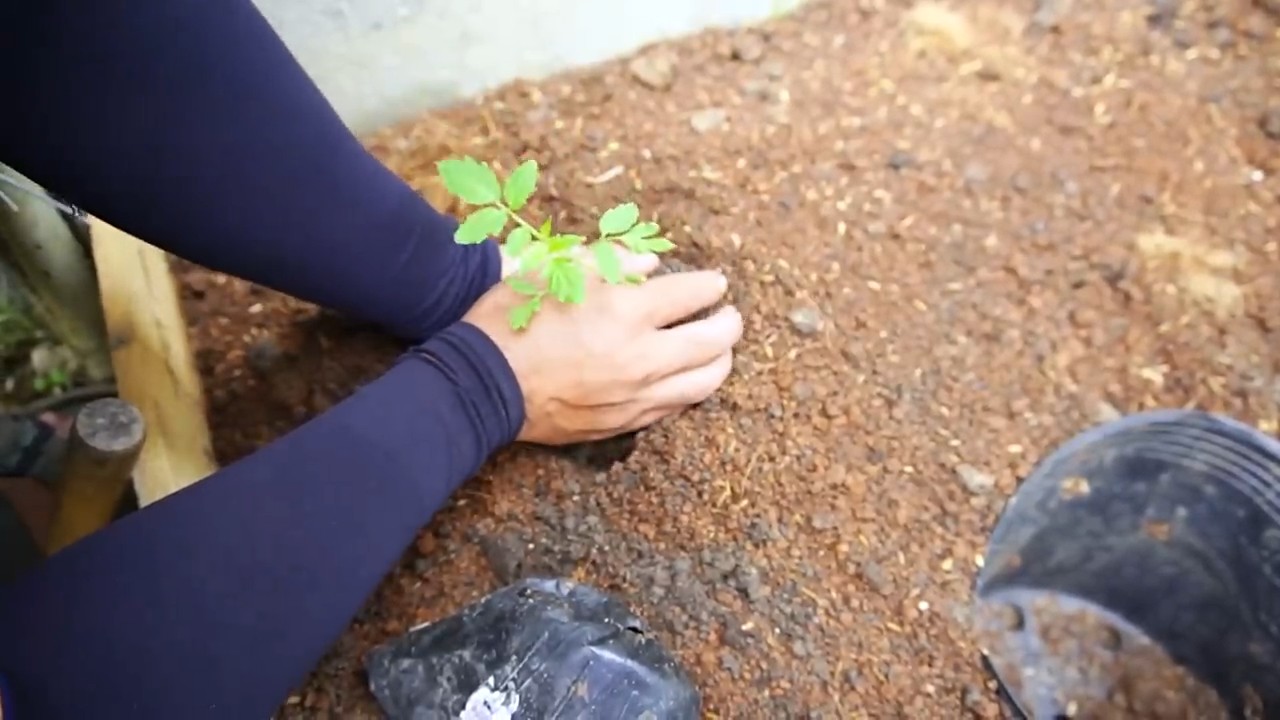
Conclusion
So, there you have it! Growing grape tomatoes at home isn’t just a fun gardening project; it’s a gateway to enjoying the freshest, most flavorful little bursts of sunshine right from your own backyard. Forget those bland, store-bought grape tomatoes that lack that vibrant, sweet-tart punch. With a little effort and the right approach, you can cultivate a thriving grape tomato patch that will reward you with an abundance of deliciousness all season long.
Why is this DIY trick a must-try? Because it empowers you to control the entire process, from seed to table. You get to choose organic methods, ensuring your tomatoes are free from harmful pesticides and chemicals. You can select varieties that are perfectly suited to your local climate and personal taste preferences. And, perhaps most importantly, you get the immense satisfaction of nurturing something from a tiny seed into a bountiful harvest. There’s truly nothing quite like the taste of a grape tomato you’ve grown yourself.
Consider these variations to personalize your grape tomato growing experience:
* Container Gardening: If you’re short on space, don’t despair! Grape tomatoes thrive in containers. Choose a large pot (at least 12 inches in diameter) with good drainage and use a high-quality potting mix. Dwarf or bush varieties are particularly well-suited for container growing.
* Vertical Gardening: Maximize your space and add visual appeal by growing your grape tomatoes vertically. Use trellises, cages, or even hanging baskets to support the vines and keep the fruit off the ground. This also improves air circulation, reducing the risk of disease.
* Heirloom Varieties: Explore the fascinating world of heirloom grape tomatoes! These unique varieties offer a wider range of flavors, colors, and textures than standard hybrids. Experiment with varieties like ‘Black Cherry’ or ‘Sungold’ for a truly exceptional taste experience.
* Companion Planting: Enhance your grape tomato patch by incorporating companion plants. Basil, marigolds, and carrots are all excellent choices that can help deter pests, attract beneficial insects, and improve the overall health of your plants.
We’ve covered the essentials, from choosing the right seeds to providing adequate support and protection. Now it’s your turn to get your hands dirty and experience the joy of growing your own grape tomatoes. We are confident that you will find this DIY project rewarding.
Don’t be afraid to experiment, learn from your mistakes, and adapt your approach as needed. Gardening is a journey, and every season brings new opportunities for growth and discovery.
So, what are you waiting for? Grab your seeds, prepare your soil, and get ready to embark on a delicious adventure. We encourage you to try this DIY trick and share your experiences with us! Post photos of your grape tomato plants, share your favorite recipes, and let us know what you’ve learned along the way. Together, we can create a community of passionate home gardeners who are dedicated to growing the best grape tomatoes possible. Happy gardening!
Frequently Asked Questions (FAQ)
Q: How long does it take to grow grape tomatoes from seed?
A: Growing grape tomatoes from seed typically takes about 60-80 days from planting the seed to harvesting the first ripe tomatoes. The exact timeframe can vary depending on the variety of grape tomato, the growing conditions (temperature, sunlight, soil quality), and your local climate. Starting seeds indoors 6-8 weeks before the last expected frost can give you a head start and shorten the overall growing season.
Q: What is the best soil for growing grape tomatoes?
A: Grape tomatoes thrive in well-drained, fertile soil that is rich in organic matter. The ideal soil pH is between 6.0 and 6.8. Before planting, amend your soil with compost, aged manure, or other organic materials to improve its structure, drainage, and nutrient content. If your soil is heavy clay, consider adding sand or perlite to improve drainage. A slightly acidic soil is preferable for optimal nutrient uptake.
Q: How much sunlight do grape tomatoes need?
A: Grape tomatoes require at least 6-8 hours of direct sunlight per day to produce a bountiful harvest. Choose a planting location that receives full sun throughout the day. If you are growing grape tomatoes in containers, make sure to place them in a sunny spot. Insufficient sunlight can lead to leggy plants, reduced fruit production, and bland-tasting tomatoes.
Q: How often should I water my grape tomato plants?
A: Grape tomato plants need consistent watering, especially during hot, dry weather. Water deeply and regularly, aiming to keep the soil consistently moist but not waterlogged. Avoid overhead watering, as this can increase the risk of fungal diseases. Instead, water at the base of the plant, using a soaker hose or drip irrigation system. Mulching around the plants can help retain moisture in the soil. Generally, watering 2-3 times a week is sufficient, but adjust the frequency based on weather conditions and soil moisture levels.
Q: What are some common pests and diseases that affect grape tomatoes?
A: Grape tomatoes can be susceptible to various pests and diseases, including aphids, whiteflies, tomato hornworms, blossom end rot, early blight, and late blight. Regularly inspect your plants for signs of pests or diseases. Use organic pest control methods, such as insecticidal soap or neem oil, to control infestations. To prevent diseases, ensure good air circulation, avoid overhead watering, and remove any infected leaves or plants promptly. Consider using disease-resistant varieties of grape tomatoes.
Q: Do I need to prune my grape tomato plants?
A: Pruning grape tomato plants can improve air circulation, promote fruit production, and prevent disease. Remove suckers (the small shoots that grow between the main stem and the branches) to encourage the plant to focus its energy on producing fruit. You can also prune away any yellowing or diseased leaves. However, avoid excessive pruning, as this can reduce the plant’s ability to photosynthesize.
Q: How do I know when grape tomatoes are ripe?
A: Grape tomatoes are ripe when they are fully colored (red, yellow, orange, or purple, depending on the variety) and slightly soft to the touch. They should easily detach from the vine when gently pulled. The taste should be sweet and flavorful. Avoid picking grape tomatoes that are still green or hard, as they will not ripen properly off the vine.
Q: Can I grow grape tomatoes indoors?
A: Yes, you can grow grape tomatoes indoors, but it requires providing them with adequate light and warmth. Use grow lights to supplement natural sunlight, ensuring the plants receive at least 12-14 hours of light per day. Choose a self-pollinating variety of grape tomato, or manually pollinate the flowers by gently shaking the plants or using a small brush. Provide good air circulation and maintain a consistent temperature of around 70-75°F.
Q: How do I store grape tomatoes?
A: Store ripe grape tomatoes at room temperature for the best flavor. Avoid refrigerating them, as this can make them mealy and reduce their sweetness. If you have a large harvest, you can preserve grape tomatoes by canning, freezing, or drying them. You can also make grape tomato sauce, salsa, or relish.
Q: What are some good companion plants for grape tomatoes?
A: Good companion plants for grape tomatoes include basil, marigolds, carrots, onions, garlic, and parsley. Basil helps repel pests and improve the flavor of tomatoes. Marigolds deter nematodes and other soil pests. Carrots attract beneficial insects. Onions and garlic repel aphids and other pests. Parsley attracts beneficial insects and improves soil health. Avoid planting grape tomatoes near brassicas (such as cabbage, broccoli, and cauliflower), as they can compete for nutrients.

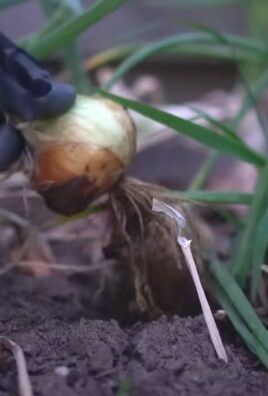
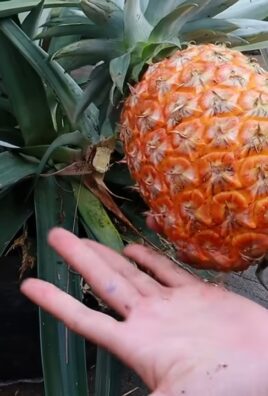
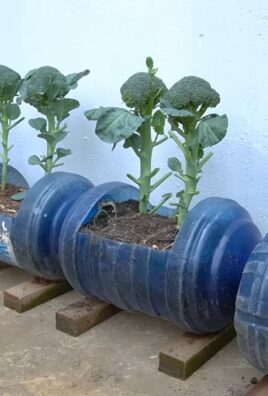
Leave a Comment